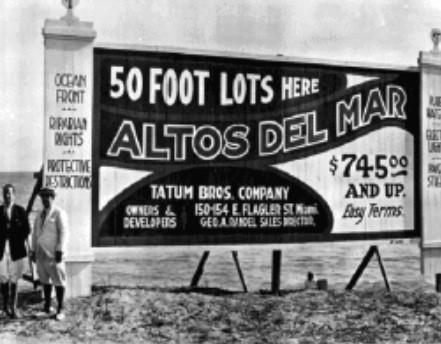The Game That Never Ends
The names change. The assets are different. The economic environments are never the same. The stories are always new and exciting. Yet speculation is as old as the hills and it will never go away.

Capital Thinking • Issue #618 • View online
“I just got wonderful news from my real estate agent in Florida. They found land on my property.” – Milton Berle
As Old as the Hills
Ben Carlson | A Wealth of Common Sense:
An army of new day traders using government stimulus money that was sent out because the country went into a self-imposed depression caused by a worldwide pandemic is not something I was expecting heading into 2020 but here we are.
In some ways, it seems crazy that we would see such speculation during the most severe economic crash of our lifetimes.
In other ways, this actually makes sense.
As Edwin Lefevre once observed,
“Another lesson I learned early is that there is nothing new in Wall Street. There can’t be because speculation is as old as the hills. Whatever happens in the stock market today has happened before and will happen again.”
Things are constantly changing in the world but human nature remains the constant.
There were plenty of comparisons being made in March between this crisis and the Great Depression but the current speculative environment feels more like another boom-bust period that began in the 1920s — the Florida land boom.
The real estate bubble of the mid-1920s was overshadowed by the Great Depression but the mania that originated in the Sunshine State may have been a precursor to the blow-off top that ended in 1929.
As of the late-1800s Florida was still mostly an undeveloped swamp with beautiful beaches. This changed once some enterprising wealthy individuals saw the potential to create the necessary infrastructure, homes, hotels and shopping that would be required to bring in more residents and tourists.
The combination of World War I and the 1918 flu pandemic created a situation in which international travel wasn’t an option for the wealthy elite so Florida became a dream destination for those looking to travel or settle down in a warmer climate.
Once that dream became a reality it didn’t take long for people to lose their minds about the potential riches that could come from buying and selling real estate.
The data and anecdotes from the 1920s land boom in Florida show all the hallmarks of a classic mania:
- 6 million people poured into the state in just 3 years.
- In 1925, two and a half million people moved to Florida looking for jobs (and most of them found one in construction).
- Bank deposits in Florida jumped from $180 million in 1922 to $875 million in 1925 (the 1924 bill that abolished state income taxes and the inheritance tax helped).
- Builders could spend $7,000 making a bungalow in a new neighborhood and immediately sell it for $20,000 the day it was completed.
- One piece of beach property was purchased for $775,000. A month later it sold for $1.5 million. Another huge beach project was purchased for $3 million, then sold just 3 days later for $7.6 million.
- Coral Gables was described as “the only city in the world where you can tell a lie at breakfast [about real estate price appreciation] that will come true by evening.”
- By the fall of 1925 the Miami Police Department was short-staffed because so many of their officers quit the job to become real estate brokers.
- More than $1 million a day was being spent on real estate in 1925 at the height of the bubble.
- The Miami Herald set a record for the amount of paid advertising they sold for real estate. The paper sold nearly 675,000 classified ads in 1924 alone.
- There were so many lots for sale in Florida by the late-1920s, half the population in the entire country would need to buy a place to occupy them all.
- The crowds were so enamored with buying property, it created small riots. People began throwing checks at developers, which numbered so high they had to be collected in barrels.
- One person who witnessed the madness observed, “all Florida was like a mighty vacuum sucking in all the loose money in the world.”
Christopher Knowlton details this and more in his book, Bubble in the Sun.
One of the stories he shares evokes the speculative actions we’re seeing today in the shares and options of bankrupt companies.
The Robinhood traders of the 1920s Florida land boom were called Binder Boys.
They made money taking advantage of the fact that courthouses were swamped from all of the real estate transactions.

*Featured post photo by Travel LocalLV on Unsplash
